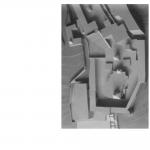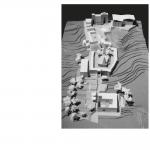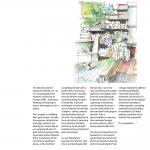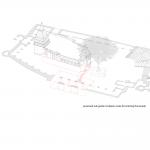The social program in most popular temples in India is unique where pilgrims traditionally spend fleeting time inside but would have been part of the procession to arrive at the sanctum sanctorum for hours singing and chanting. Afterwards they would go quiet and peaceful and linger around the precincts. Our response therefore focuses on the path and the un-built space rather than the built forms and tries to heighten this journey of the pilgrim.
The elegance and complexity of the spaces in the 400-year-old temple of Tuljapur demonstrate a method of growth by accretion without resorting to any formal plan. By enhancing its core passageways so that it continues to grow in the same spontaneous way, we have proposed a restructuring that is sympathetic to this history and true to the context. The intervention here is not that of creating an impactful architectural footprint but to transcend the basic needs of the pilgrim and enrich his/her experience in the temple and the town.
2005






